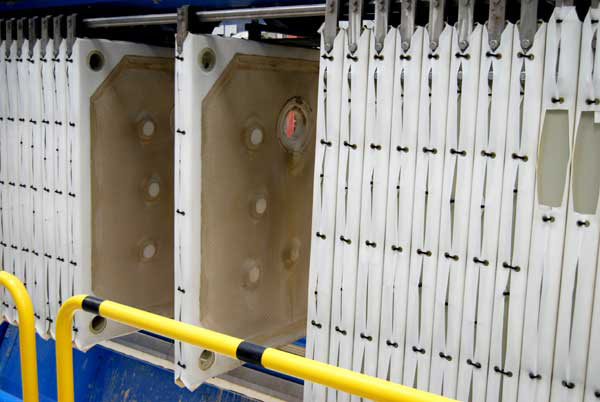
Washing is a common part of aggregate processing but managing water resources is essential to ensure operations are profitable and environmentally friendly. Claire Symes reports
Demand for higher quality materials and processing of more difficult reserves is driving up the rates of aggregate washing across Europe. However, access to water resources and room for traditional settlement lagoons is not becoming available at the same rate.
Water treatment is the only option open to many quarries moving into washing operations and also for quarries looking to remove the cost of managing settlement lagoons. Quarries have two main choices when it comes to investment in water treatment technology - centrifuges or filter presses.
"The health and safety aspects and the costs involved preclude the use of lagoons in most quarries these days," explained CDE technical supervisor Dermot Murphy. "Many quarries that are still using them are having to invest significant amounts in security fencing and embankments to ensure no leakage to local rivers or streams. They also still have to have machines specifically for removing dried sludge and pay to dispose of the sludge too.
"The difficulty of getting water supplies also means that quarries need to be more creative when it comes to reusing what resources they have, so usually opt for a filter press or centrifuge to recover water from the waste sludge for reuse. Both remove the need to have settlement ponds but there are benefits and disadvantages to both." Centrifuges are the cheaper option for initial investment and are often fully automated so can be left to operate 24 hours a day with very little need for supervision. Filter presses can be operated manually, partially automated or fully automated though depending on the needs of the site and budget constraints.
However, the electricity costs can mean that operating costs are higher for centrifuges than for a similar capacity filter press. "In most situations the higher investment cost of the filter press can be recovered with the lower operating costs within the first year - maybe two at the outside," said Murphy. "The savings over 10 to 20 years of operation could be significant." Space can also be a consideration though - centrifuges take up less room and can be more easily moved than a filter press but do require the use of flocculants. Filter presses can also be built to be moved, if necessary, but generally require more engineering.
Water recovery capabilities also vary between the two technologies, as well as from site to site. "Filter presses usually achieve 85% water recovery, although we have seen up to 93% in some applications," said Murphy. "Centrifuges on average offer 65 to 75% recovery, so the cake produced may need to be stored for sometime in order for it to dry out enough to be reused." Cake from both techniques can be sold into other industries and Murphy reports that it has been successfully used for fertiliser pellets, pond linings and landfill barrier material, although it does depend on the feed material.
Centrifuges can often be hard to set up initially but can be effective once this settling in period is overcome and can continue to be if regularly maintained. "Centrifuges have come into the quarry sector from the water industry and do not necessarily cope as well with the abrasion which they receive in the quarry environment and this can add to the maintenance demands." According to Murphy, filter press technology is developing and said that CDE is in the process of building its largest ever filter press which will have plates measuring 2.5m by 2.5m. "This will be a high capacity plant capable of delivering a throughput of 200tonnes per hour. Centrifuges can deliver this capacity if you have enough of them."













